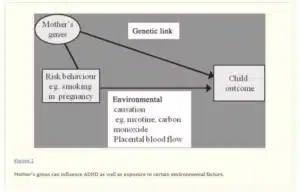This study compared the Comparison of lung function values of trained divers hyperbaric chamber after inhaling 100% oxygen and regular air. In a crossover design involving 18 divers, it was found that inhaling 100% oxygen for 30 minutes significantly affected various lung function parameters, including FEV₁/FVC, PEF, FEF25, FEF50, and FEF75. There was also a notable difference in FEV₁. However, lung capacity (VC and FVC) remained unaffected in both groups. After a one-day washout period, lung function returned to normal. This research suggests that inhaling 100% oxygen in a hyperbaric chamber has a temporary impact on lung function in trained divers.
Diving is an activity performed in more than 1 atmosphere absolute pressure (ATA) either underwater or in a hyperbaric chamber. We aimed to compare lung function values of trained divers in 1.5 ATA hyperbaric chambers after inhaling 100% oxygen and regular air.
Method
This experimental study with crossover design involved 18 trained divers in 1.5 ATA hyperbaric room, which is equivalent to a 5-meter depth. The eighteen subjects as the supplementation group, using oro-nasal mask, inhaled 100% oxygen for 30 minutes followed by a one-day washout period. The subjects were then crossed-over into control group inhaling only regular air for 30 minutes. Lung function test was performed before and after supplementation. Results: In eighteen subjects inhaling regular air, there was a significant difference (p < 0.05) in FEV1/FVC, PEF, FEF25, FEF50, and FEF75. Whereas in eighteen subjects inhaling 100% oxygen, significant difference (p < 0.05) was observed not only in FEV1/FVC, PEF, FEF25, FEF50 and FEF75, but also in FEV1.
FAQs:
- What is a 1.5 ATA hyperbaric chamber, and why are divers using it?
- A 1.5 ATA hyperbaric chamber is a pressurized environment often used for training and research by divers. It simulates conditions at a depth of approximately 5 meters underwater. Divers use it to prepare for real underwater experiences and study physiological responses.
- Why did researchers compare the lung function of trained divers in hyperbaric chambers inhaling 100% oxygen and regular air?
- This comparison aims to understand the impact of different breathing gases on lung function. It’s especially relevant for divers, as they may use different gas mixtures during underwater activities and want to assess the potential effects on their respiratory health.
- What lung function values were measured in this study?
- The study measured various lung function parameters, including FEV₁/FVC (Forced Expiratory Volume in 1 second/Forced Vital Capacity), PEF (Peak Expiratory Flow), and different FEF (Forced Expiratory Flow) values (FEF25, FEF50, FEF75). These values help evaluate how well the lungs are functioning.
- What were the findings of the study regarding lung function in divers inhaling 100% oxygen and regular air in the hyperbaric chamber?
- The study found that inhaling 100% oxygen had a significant impact on several lung function parameters, including FEV₁/FVC, PEF, FEF25, FEF50, FEF75, and even FEV₁. In contrast, inhaling regular air also showed significant differences in these parameters, but not in lung capacity (VC and FVC).
- Is the impact on lung function temporary, or does it have lasting effects?
- The study suggests that the impact on lung function is temporary, and lung function returns to normal after a one-day washout period. This implies that the observed changes are reversible and not indicative of long-term damage.
- Why is this research important for divers and hyperbaric chamber users?
- Understanding how different breathing gases affect lung function in hyperbaric conditions can help divers make informed choices about gas mixtures and their potential impact on respiratory health. It also contributes to the broader knowledge of human physiology in such environments.
结论
There were significant differences in lung function, especially in dynamic volume of trained divers in 1.5 ATA hyperbaric chamber after inhaling 100% oxygen and regular air for 30 minutes; while there were no significant differences in lung capacity (VC and FVC) in the both groups. Lung function returned to normal following supplementation with a 1-day washout period.




